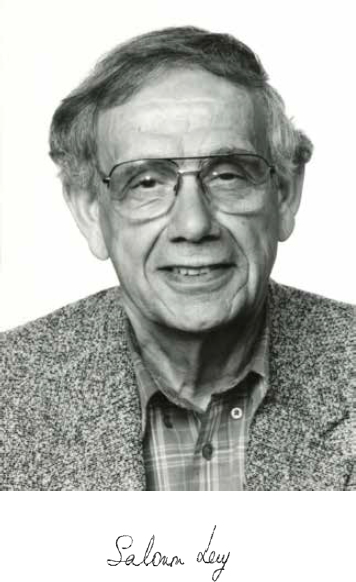This page intentionally left blank.

SALOMON LEVY
1926–2016
Elected in 1974
“Contributions to development of nuclear systems for high-performance boiling water reactors.”
SALOMON LEVY, a giant in the field of nuclear power, passed away March 23, 2016, in San Jose, California, at age 89.
He was born April 4, 1926, in the portion of the Palestine Territories that eventually became Israel, and immigrated to the United States to further his education. He earned bachelor of science, master of science, and doctor of philosophy degrees in mechanical engineering from the University of California at Berkeley.
Upon graduation in 1953 he joined General Electric Corporation. He served in a variety of positions in the Nuclear Division, where he was largely responsible for the engineering of the boiling water reactor and the pressure suppression containment concepts for power reactors. About one third of the nuclear power reactors in the United States use these design concepts. In 1975 he became general manager of GE’s Boiling Water Reactor Operations, supervising the work of about 4,000 employees. His colleagues referred to him as “the smartest guy in GE Nuclear.”
Dr. Levy was a major figure in the recovery of the American nuclear power industry after the reactor accident at Three Mile Island. In 1977 he formed S. Levy Incorporated (SLI) to
provide consulting services for the nuclear industry and US government. His company grew from just one person in the early days to over 60 employees, and he remained president and CEO until SLI was sold in 1998, when he became principal of Levy and Associates. He was also an adjunct professor at both the University of California–Los Angeles and UC Berkeley.
In 2000 he cochaired, with Neil Todreas, a Nuclear Energy Research Advisory Committee subcommittee that launched the Generation IV Roadmap effort, which provides a framework for international cooperation in research and development for advanced nuclear energy systems. The Generation IV International Forum served as an incubator for new and advanced reactor designs.
He authored a number of technical publications. Especially notable are two books. Two-Phase Flow in Complex Systems (Wiley, 1999) is a definitive account of the fundamental science behind the boiling water nuclear power reactor. The book takes an engineering approach looking at an integrated system, including costs, rather than discussing individual phenomena. It has become an important textbook because of its emphasis on detailed scaling analysis of experiments to properly mimic flow behavior in large industrial systems.
He later published 50 Years in Nuclear Power: A Retrospective (American Nuclear Society, 2007). This entertaining and informative volume provides an insider’s account of the evolution and growth of nuclear power, especially in the United States.
He was a fellow of the American Nuclear Society (ANS) and a member of the National Academy of Engineering. He received the Donald Q. Kern Award from the American Institute of Chemical Engineers in 1992, and in 1997 the American Society of Mechanical Engineers conferred its highest recognition, Honorary Member, for “distinguished service that contributes significantly to the goals of the engineering profession.” In 2012 the ANS awarded him its Presidential




